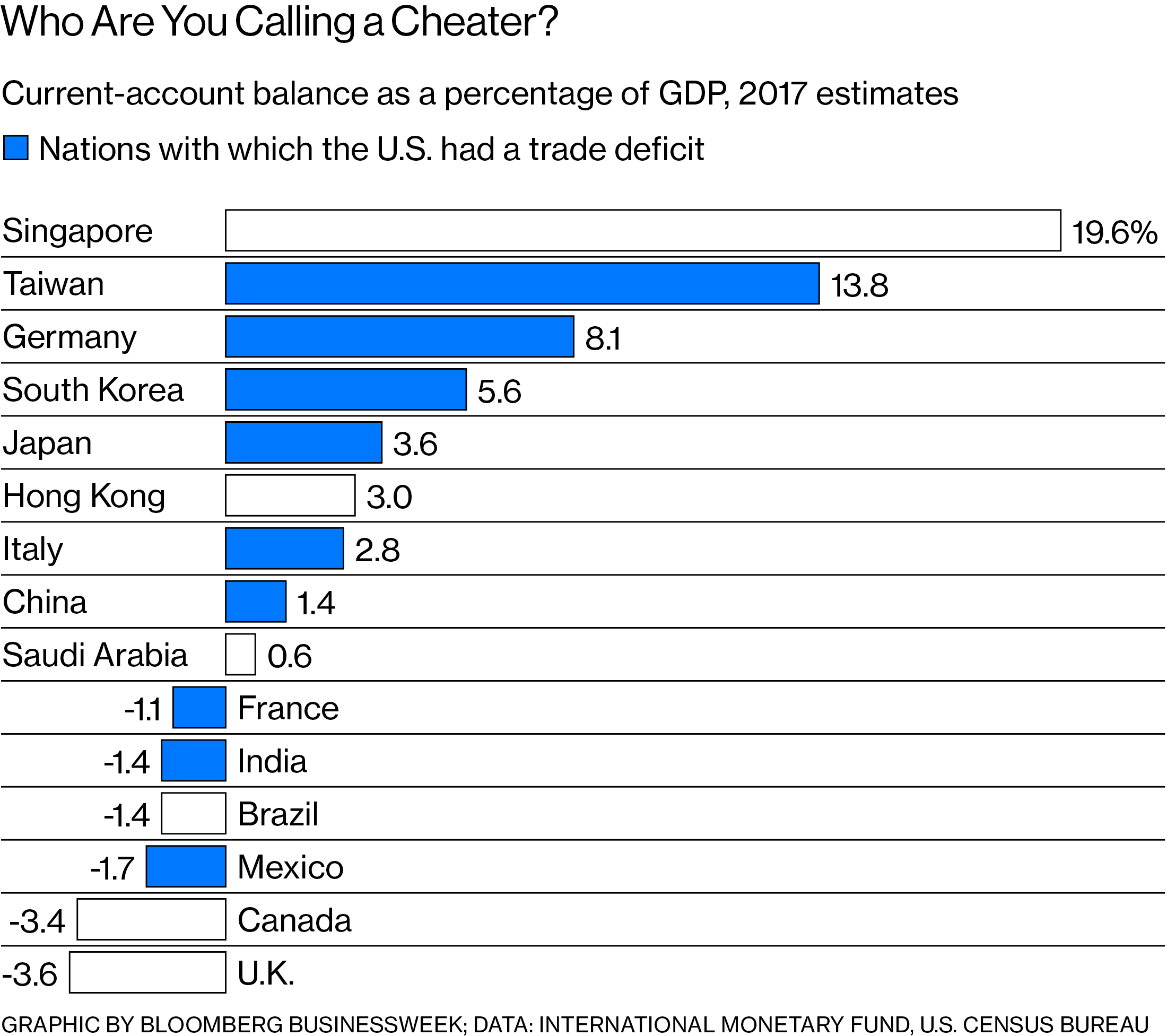Analyzing The Effects Of Trump's Tariffs On US Manufacturing Growth.

Table of Contents
Short-Term Impacts of Trump's Tariffs on Manufacturing
The immediate effects of Trump's tariffs were a mixed bag, creating winners and losers within the US manufacturing landscape.
Increased Costs for Businesses
The most immediate consequence was a rise in the cost of imported goods. Tariffs, essentially taxes on imports, increased the price of raw materials and components crucial for many manufacturing processes. This was particularly impactful on sectors heavily reliant on imported inputs, such as steel and aluminum. The automotive industry, for instance, faced significantly higher costs for steel used in vehicle production. Companies like Whirlpool, which relies on imported components, saw their production costs inflate, impacting profitability and competitiveness.
- Higher input costs for manufacturers: Increased prices for raw materials and components led to reduced profit margins.
- Reduced competitiveness in global markets: Higher production costs made US-manufactured goods less competitive internationally.
- Potential job losses in tariff-sensitive industries: Some companies were forced to lay off workers or even shut down operations due to increased costs.
Initial Boost to Certain Domestic Industries
While many sectors struggled, some experienced a short-term surge in demand. Domestic steel producers, for example, benefited from the tariffs as demand for imported steel decreased, leading to increased domestic production and, temporarily, job creation. However, this boost was largely artificial, reliant on government protection rather than inherent market competitiveness.
- Increased domestic production in protected industries: Tariffs shielded certain sectors from foreign competition, leading to increased domestic output.
- Short-term job growth in specific sectors: The increased production led to a temporary rise in employment in some industries.
- Potential for inflated prices due to reduced competition: The reduced competition could lead to higher prices for consumers.
Long-Term Effects of Trump's Tariffs on US Manufacturing Growth
The long-term consequences of Trump's tariffs proved to be more significant and far-reaching than the initial short-term effects.
Retaliatory Tariffs and Global Trade Wars
Trump's tariffs triggered retaliatory measures from other countries. China, in particular, responded with its own tariffs on US goods, escalating into a trade war. This led to a significant reduction in US exports, harming American manufacturers who relied on foreign markets. The disruption to established global supply chains added further complexity and uncertainty to the situation.
- Reduced export opportunities for US manufacturers: Retaliatory tariffs made US products less competitive in foreign markets.
- Damage to international trade relationships: The trade war damaged relationships between the US and key trading partners.
- Uncertainty and instability in global markets: The trade disputes created uncertainty and volatility in global markets.
Impact on Investment and Innovation
The trade uncertainty created by the tariffs negatively impacted investment in US manufacturing. Businesses hesitated to invest in new facilities, equipment, or research and development due to the unpredictable trade environment. This reduced innovation and technological advancement in the sector, potentially hindering long-term competitiveness.
- Reduced foreign direct investment in US manufacturing: Uncertainty deterred foreign companies from investing in US manufacturing facilities.
- Decreased innovation due to uncertainty: Businesses postponed investments in R&D due to the volatile trade environment.
- Potential for long-term decline in competitiveness: The lack of investment could lead to a decline in US manufacturing's global competitiveness.
Overall Economic Impact and Manufacturing Sector Growth
The overall economic impact of Trump's tariffs on US manufacturing growth is a subject of ongoing debate. While some sectors experienced short-term gains, the long-term consequences, including retaliatory tariffs, trade wars, and reduced investment, likely outweighed any temporary benefits. Studies examining GDP growth, job creation/loss, and inflation during this period provide a more nuanced understanding. These studies often show mixed results, highlighting the complexity of isolating the specific impact of tariffs on manufacturing growth amidst other economic factors.
- Overall impact on GDP growth: Studies suggest varying impacts, with some showing a negative effect on overall GDP.
- Net job creation or loss in the manufacturing sector: While some sectors experienced job growth, others experienced losses, resulting in a net effect that is hard to definitively assess.
- Long-term effects on US manufacturing competitiveness: The trade war and reduced investment may have long-term negative consequences on US manufacturing competitiveness.
Conclusion: Assessing the Legacy of Trump's Tariffs on US Manufacturing
The impact of Trump's tariffs on US manufacturing growth is a complex issue with no easy answers. While some sectors experienced short-term gains, the long-term consequences, including retaliatory tariffs, reduced investment, and disruptions to global supply chains, likely overshadowed any positive effects. The overall economic impact remains a subject of ongoing research and debate. A balanced perspective requires considering both the short-term benefits and the potentially long-lasting negative consequences. To gain a deeper understanding, further research and analysis are crucial, particularly sector-specific studies which can shed light on the varied impact of these policies. We encourage you to delve deeper into the specifics of "Trump's Tariffs on US Manufacturing Growth" and their lasting impact on specific sectors of the American economy.

Featured Posts
-
 Rihannas Choice Cherry Red Heels To Complement Her New Engagement Ring
May 06, 2025
Rihannas Choice Cherry Red Heels To Complement Her New Engagement Ring
May 06, 2025 -
 I Dont Know Why I Just Do Jeff Goldblum Ariana Grande And The Mildred Snitzer Orchestra Collaboration
May 06, 2025
I Dont Know Why I Just Do Jeff Goldblum Ariana Grande And The Mildred Snitzer Orchestra Collaboration
May 06, 2025 -
 Where To Watch Gypsy Rose Life After Lockup Season 2 Episode 2 Online Free
May 06, 2025
Where To Watch Gypsy Rose Life After Lockup Season 2 Episode 2 Online Free
May 06, 2025 -
 Affordable And Reliable Goods
May 06, 2025
Affordable And Reliable Goods
May 06, 2025 -
 Laga Piala Asia U 20 Iran Menang Mudah 6 0 Atas Yaman
May 06, 2025
Laga Piala Asia U 20 Iran Menang Mudah 6 0 Atas Yaman
May 06, 2025
